Every one of us has at least one brand we’re loyal to. Whether it’s a drink, a wearable electronic device or a piece of gym apparel, a strong brand identity encourages consumers to create a continuous relationship with a company. While there are likely many factors that contribute to this brand loyalty, a majority of successful companies are the result of carefully thought-out branding across many channels and platforms.
Table of Contents
What Is A Brand And Why Do You Need One?
It is very common for people to equalize the words “brand” and “company.” While there surely is some overlap, the two should be seen as separate terms.
To put it simply, a “company” is the organization that produces or sells products or services, while a “brand” is the image a company creates for its product. In other words, a company or a product can be a brand, but brands are not necessarily companies.
Examples of famous companies that are also brands include Sony and Nike, while examples of branded product lines produced by more unbranded companies are Gillette, Pampers and Duracell, all of which come from a parent company: Procter & Gamble.
A Brand Is A Promise To The Customer
It lets consumers know what they can expect from you. Through the way you market your product or service, prospective customers can envision what the product itself might be like. Customers rarely have the possibility to try out all the variations of a product, especially in highly saturated markets. Because of this, they can’t make a completely objective decision when choosing which product to buy.
This is where branding comes in. In terms of a final decision, the associations we have with specific brands will often prevail. The role of branding is, thus, to define ways customers perceive your product before they even try it. Its importance lies in the fact that it informs prospective customers of your product and in which ways it differs from your competitors’ ones without the help of a tangible product or service.
Defining your brand is the first step towards building a successful name... and having a poorly defined or confusing brand is perhaps worse than not branding at all, as it might leave the wrong impression. Wasting time and money on ill-defined branding is the last thing you want to do, so it’s important to approach branding strategically from the get-go.
The ultimate goal of branding is to create something instantly recognizable. Whether that’s a logo, a color palette, a slogan or a song, as long as it rings a bell, it serves the purpose. The goal is for consumers to identify brand elements and have a positive association with it. That way, the moment a customer sees your product on the shelf, it will give them a positive cue.

The Types Of Brands
So, your company is finally done with the administrative mumbo-jumbo, and you’re ready to start working on your (re)branding. The first question you’ll need to answer is whether you’d like to brand a specific product line, your company name, or both.
Corporate branding is an approach that puts your company and its identity first. When a corporation or a company is the main brand, all products and services are marketed under the wing of the big name. For example – Hoover, a famous vacuum cleaner company, is so well-known that in the UK the company name is used as a synonym for the device, yet it has very few widely known model names.
Product branding, as the name suggests, focuses on the specific product line. Very often, the company name is not in the spotlight.
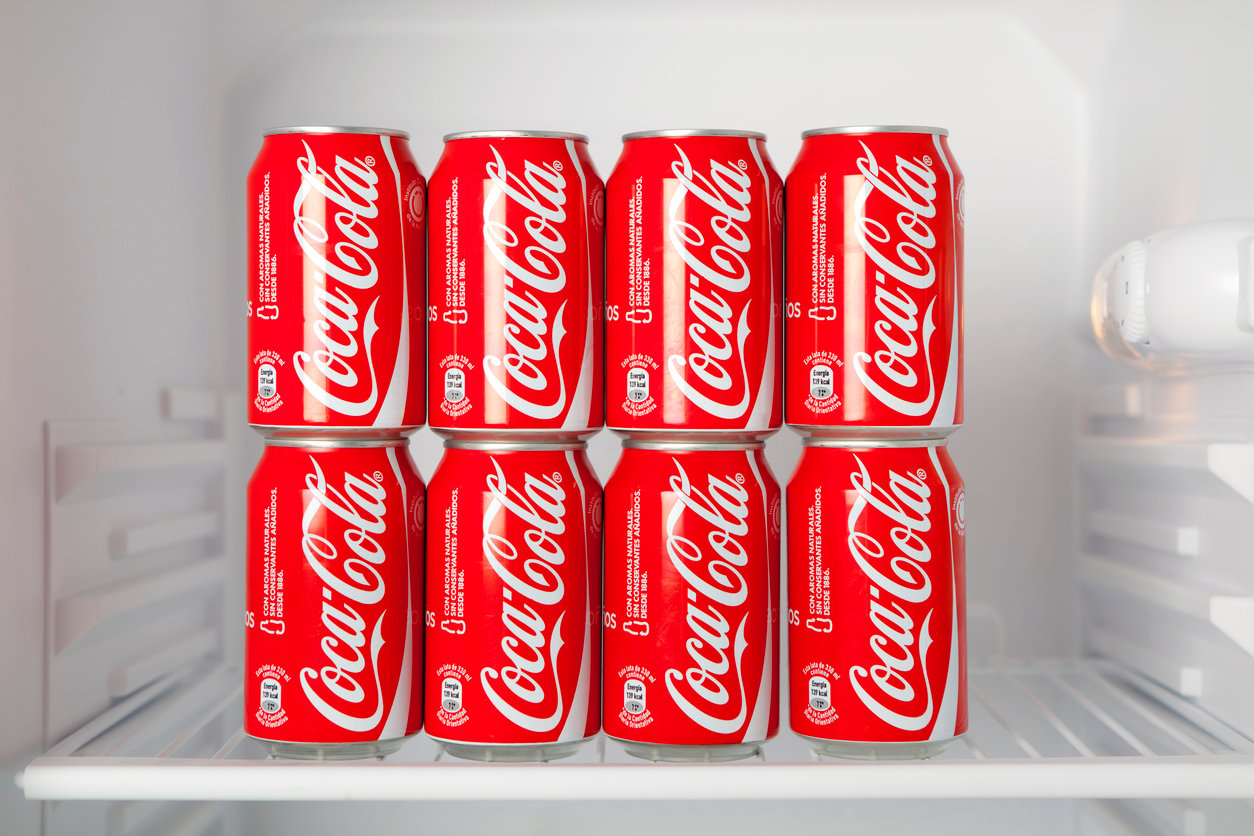
1. Coca-Cola
With their flagship beverage product called Coca-Cola carrying the same name, branding the corporation The Coca-Cola Company was not too difficult. They have many products branded under the same umbrella name, such as Coca-Cola, Diet Coke, Coke Zero and Cherry Coke. Those are all are covered under Coca-Cola’s brand.
However, Sprite, another product marketed by the same company, is branded separately. This is a great example of a successful, though complicated, mixed product branding.
The focus of product branding is on the services and products and their value to the customer. On the contrary, corporate branding focuses on the company's values and ideologies. Of course, both can be applied at the same time, making it a combined approach as we see in the traditional Coca-Cola beverage line.
Storytelling In Branding
Mark Truby, Vice President of Communications for Ford Motor Company, once said this about the importance of storytelling in brand building:
“A good story makes you feel something and is universal. They want to grasp your values and your commitment to excellence; be inspired and intrigued. Storytelling is the most powerful way to convey these ideas.”
To connect with another person, you need to get to know them. You must ask them about their lives – their backgrounds, ideals and ambitions. Humans are made that way – we understand, empathize with and remember stories. The most memorable things about others are the anecdotes and stories associated with them – and companies are no exception. In both friendship and branding, the goal is to make a connection.
Therefore, storytelling is an essential part of building a brand. Sharing the story, the ideals and the motivation of your company will shape the perception customers have of your company. It’s no longer enough to simply show and tell. Expressing your core values and services is key for brands who want to stand out. Then, then people understand what your brand is and what it stands for, connections can be forged.
However, the stories told must be relevant to the listener in order to evoke empathy and affinity. How does your brand solve a problem the customers struggle with or address an issue they believe in? The matter that is addressed may be as wide as a pressing political issue or as particular as the lack of suitable marathon running jacket.
While in some cases a risky move, taking a stance on pressing social issues creates reactions in lightning-speed. People are driven by the need to take part in the issues, partly by supporting a brand they believe in. Identifying shared values with a company creates strong engagement in the brand identity. However, the issue must be well-defined and applicable to your target audience to truly be beneficial to your brand.
Storytelling does not need to be in written form. In fact, a narrative can be even more effective when it comes in an innovative format. However, brands need to establish a recognizable voice, a signature style in which they communicate. Whether that’s humorous, whimsical, businesslike, sympathetic or something else will completely depend on your company values, products and target audience.
If you're looking to add a bit of creative storytelling to your digital strategy, these leading creative agencies can help.
2. Dollar Shave Club
Dollar Shave Club is a perfect example of amazing story-telling, with the one-minute long video setting the brand up for overnight success. The best part? The production of the entire ad cost only $4,500, according to Michael Dubin, the founder and the superstar of Dollar Shave Club.
The video advertisement is extraordinarily witty, but also unforgivably straightforward. In a short timeframe, the viewer is presented with a problem they can empathize with and explained how they, in contrast to other companies, solve it. There’s even time left to highlight the additional benefits of the enterprise, like creating jobs. These steps enable the viewer to identify with the brand and start seeing it as a philanthropic solution to it. Overall, the video creates a strong, resonating emotional engagement in just a speck over a minute.
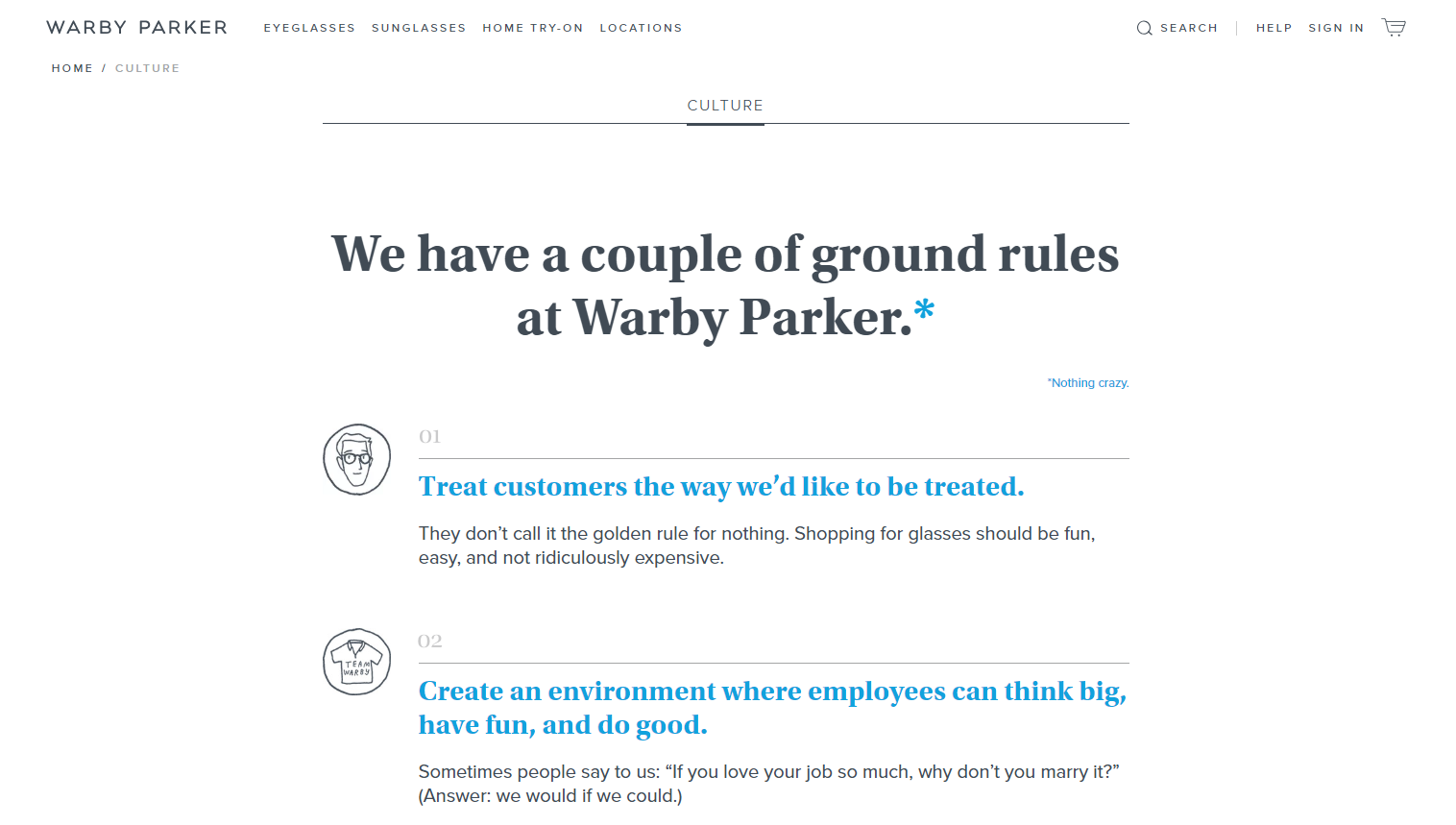
3. Warby Parker
Similar to Dollar Shave Club, a leading eyewear producer Warby Parker, uses a consistently lighthearted, humorous tone. Examples of this are seen throughout their website, a charming detail of which is their eyewear glossary. This page is full of witty copy that also presents value to the customer through information sharing and advertisements (see “iOS app”).
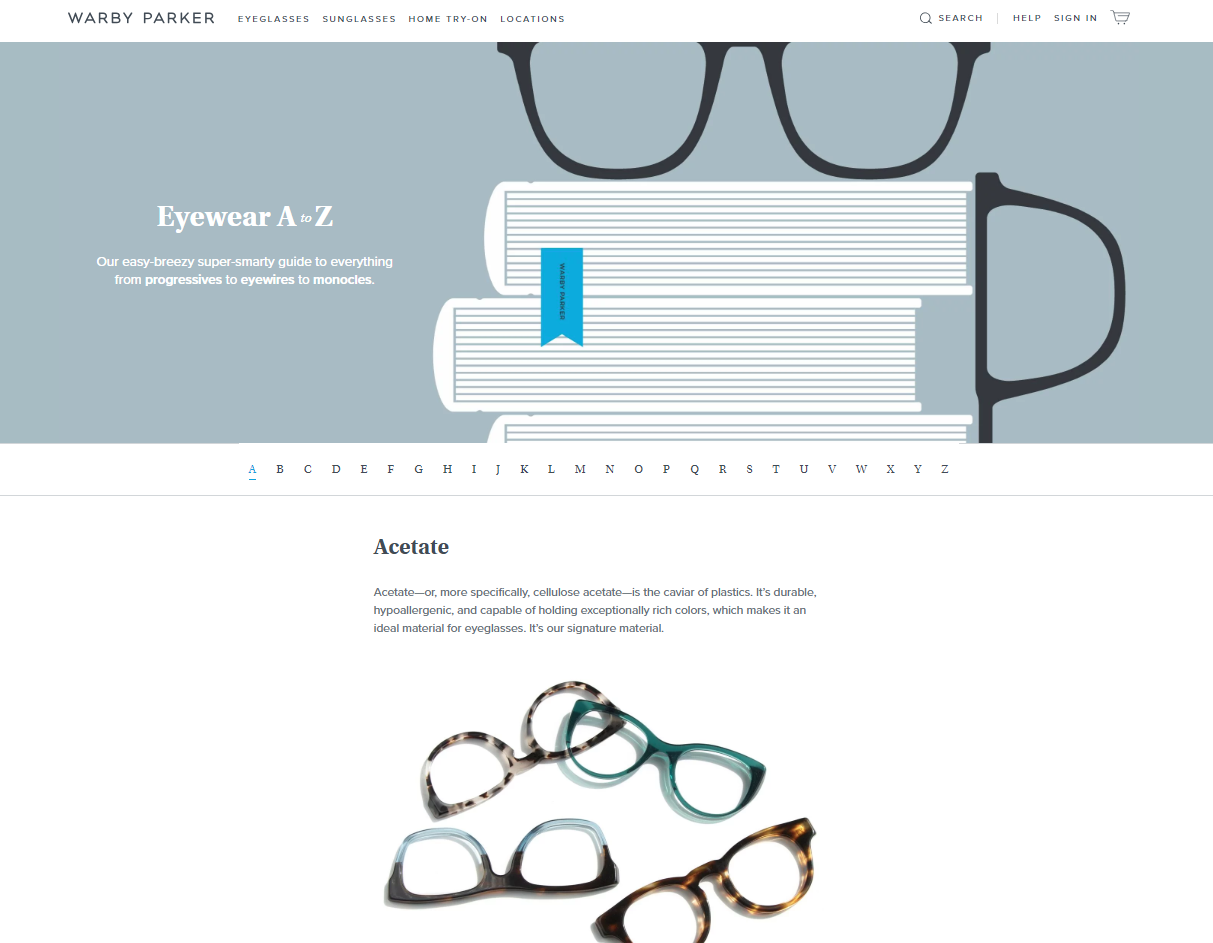
In order to introduce the story behind the company conception on their “About Page,” they use a personal anecdote. This anecdote is caused by the problem they are aiming to fix, and one that everyone in need of glasses is familiar with – the high price of glasses. This enables Warby Parker to instantly connect with their target audience and create a friendly image of themselves. Their branding efforts are rounded up with sweet, whimsical illustrations and clean design. These elements create a memorable, warmhearted and sympathetic brand that’s easy to trust and relate to.
4. Nike
To celebrate the most iconic piece of athletic apparel, Nike took an unexpected approach to storytelling. In a multi-frame comic strip, they tell the history of the Windrunner jacket in very few words and several quirky drawings.
The colorful yet simple series of illustrations convey the essence of the message clearly and directly.
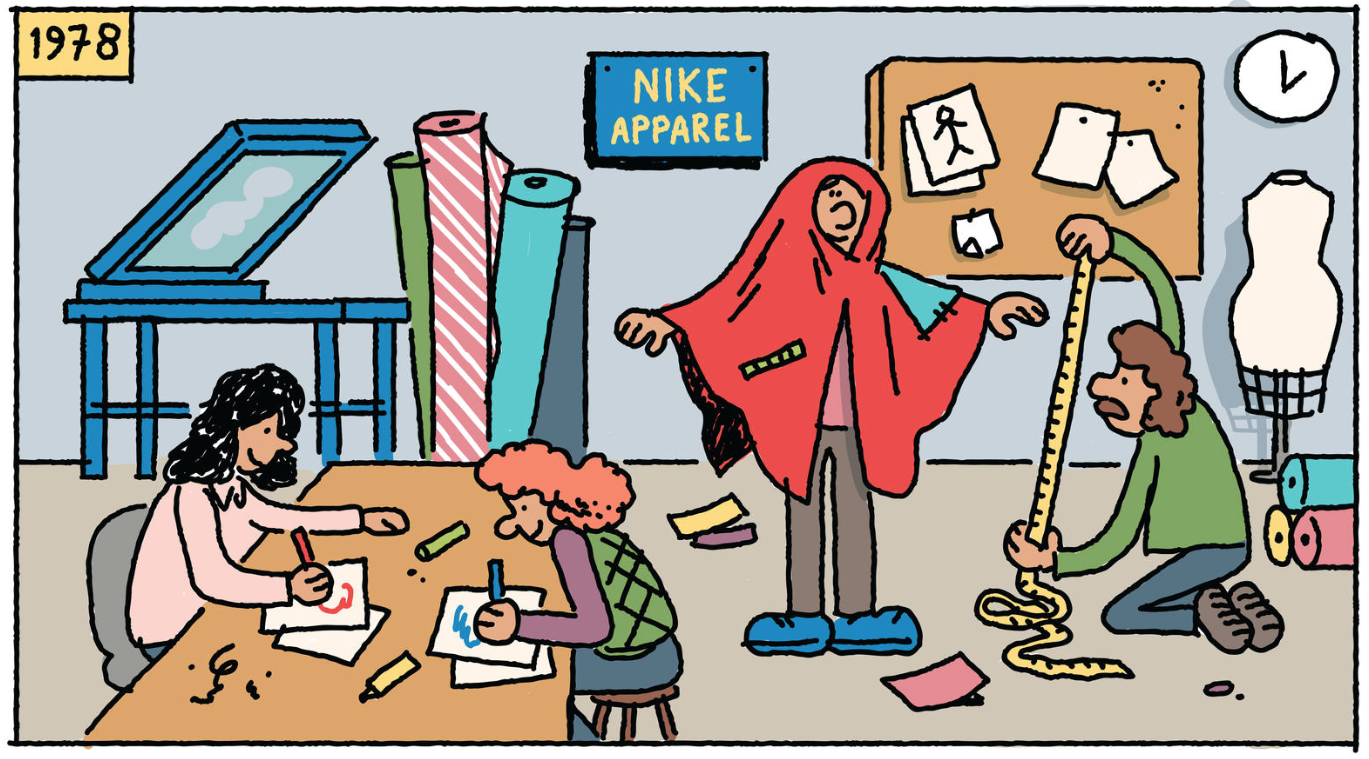
While packaged to represent a historical timeline, this example of visual storytelling doesn’t lack the usual elements of a story. In fact, the protagonist, the problem and the solution are all plainly communicated. The storytelling format they employ is fun, enjoyable and easy to follow. Even more importantly, they tell a story a customer can relate to and understand the importance of. And despite the fact that it deviates from the traditional Nike aesthetic, upon further inspection, Nike's continuous dedication to simplicity in their logo, website and products was playfully translated to the comic, which relies on few elements to communicate with consumers.
What's more, Nike is one brand that always employs strong storytelling. Thus, emotional engagement in almost every campaign they run since the late 1990s.
How Brands Differentiate Themselves From Competitors
In order to build a memorable, compelling brand, it’s necessary to express what it is that makes you different from the competition. Building strong brand recognition requires constant reminders of these differences. A great way to succeed with this is to coordinate the differentiation aspect with the company’s unique value proposition, promise, and key characteristics.
The key difference you choose as the defining feature of your brand may be anything. From some, physical product characteristics, price point, brand origin story, and dedication to customer experience punctuate the brand.
However, ensuring your brand stands out can be done without the help of specific fundamental differences. All you have to do is focus the consumers’ perception onto a specific feature of your brand. Even if other brands have that same feature, they may not put emphasis on it. Almost anything can be a defining point of a brand -- say, great customer service in the tech industry, organic ingredients for food and produce, or strong corporate social responsibility in the apparel sector. It’s all about the promise that you make and keep that your competitors don't
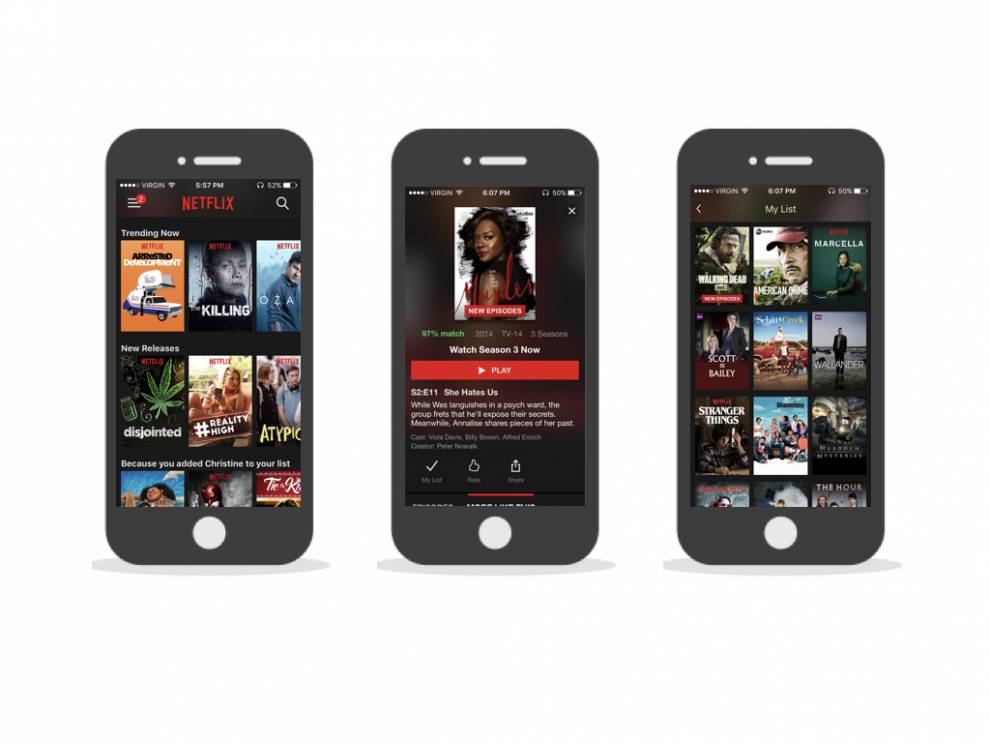
5. Netflix
Back in 1997, Netflix started out as a DVD rental service that offered movie classics, which were unavailable for rent at Blockbuster. This way, they addressed the need of their target audience that wanted to watch older, classic movies, but couldn’t get it at the major movie-rental corporation. Netflix grew, offering more modern movies, and eventually launched their streaming service in 2007. Today, they are the big fish in this industry.
And Netflix's evolution shows that groundbreaking startups should work to differentiate themselves early to ensure long-term success.
Effective marketing campaigns and other business ventures will stress the importance of these differences. However, it’s important to approach this problem strategically, as bashing competition head-on is rarely a fruitful strategy. Instead, try to keep the viewer’s focus on your offer and its beneficial features. Make sure the differentiation point is clearly communicated to the customer because this aspect of branding is the key to cultivating a loyal customer base. In order to make your message resonate, you need to speak the language of your customers. This is, in part, why the previously mentioned Dollar Shave Club advertisement and Warby Parker website work so well – they use language that’s interesting, but more than anything, familiar to their target audience and communicates their value.

6. Trader Joe’s
A wildly popular grocery store chain, Trader Joe’s uniqueness is reflected in their business model and company culture. It’s not only that cashiers in Hawaiian-style shirts always have smiles on their faces – the friendly atmosphere and the nautical theme is conveyed through other factors. The colorful, handwritten, witty store signs all over the place serve to both inform on special deals and reinforce the neighborly mood of the stores. Trader Joe’s makes it a priority to maintain an image of shopping at their stores as a “treasure hunt.”
Unlike their main competitor, Whole Foods, Trader Joe’s groceries do not compromise affordability for quality. Instead, with smaller stores, Trader Joe’s manages to find a good balance of both of these aspects. Accordingly, they do not advertise like a traditional national brand. Instead, they place the focus on their unique, chirpy character.
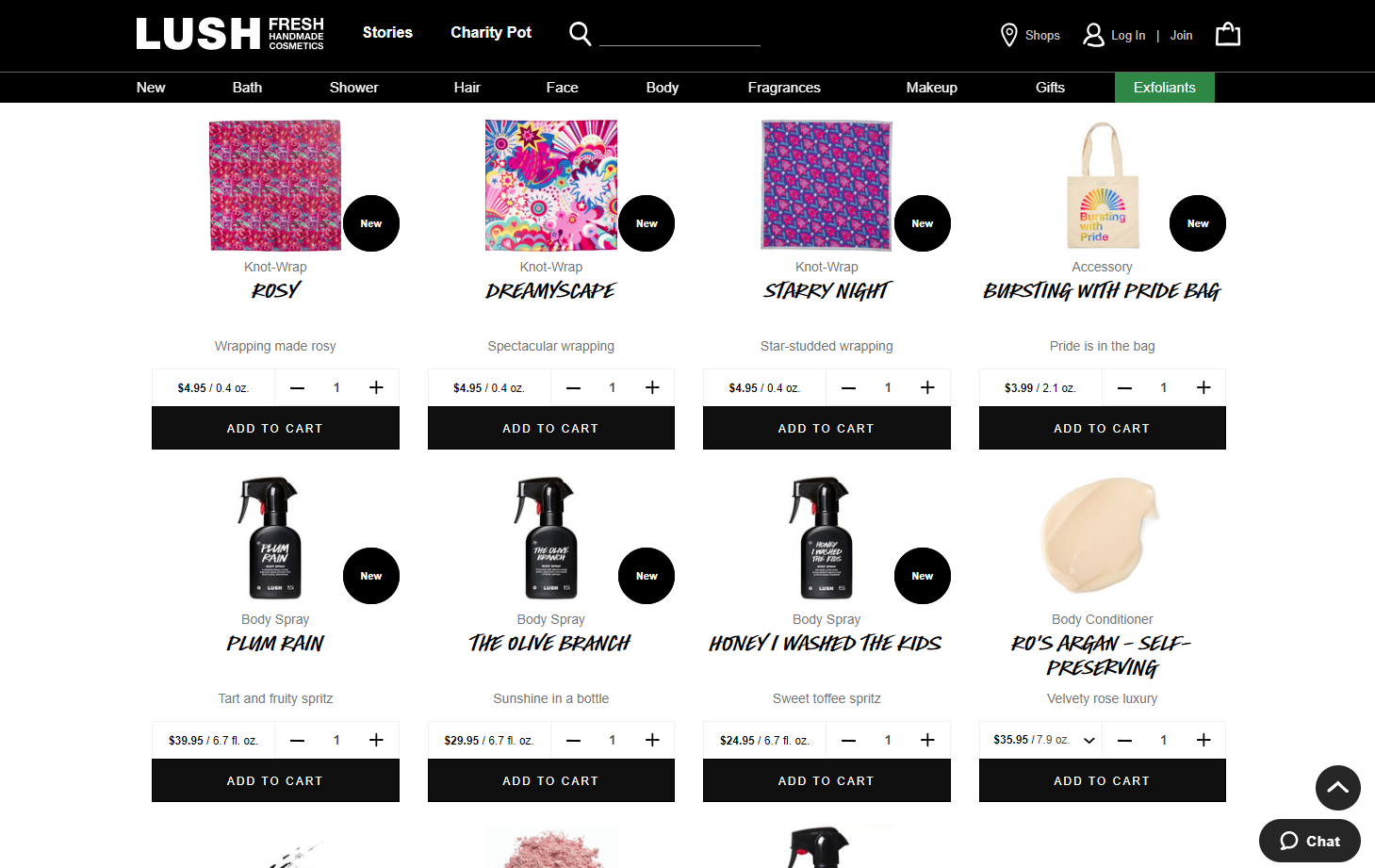
7. Lush
Coming from humble beginnings in 1995, Lush is a cosmetics company that stayed true to their brand's core values for over 20 years. Lush's main point of differentiation is the “homemade craft” feel of their products.
All products are handmade and never tested on animals, and the ingredients are vegan and from ethical sources. While this list of priorities might not be surprising for a food producer, as a cosmetics company, Lush stands out with these tags. Coupled with this are frequent activism and strong stances on social and environmental issues, such as animal testing and ethical police operations, and you have a strong brand with a consistent mission.
Lush's outspoken communication proves that they know their audience well. When women complained about the unethical, chemically-loaded, anything-goes mass production makeup and cosmetics industry, Lush listened. Instead of going for the luxurious vibe most makeup producers push, they chose a path of authenticity and ethical production. Along with fighting for the same issues, that is exactly how they remain appealing to their continually-loyal customer base.
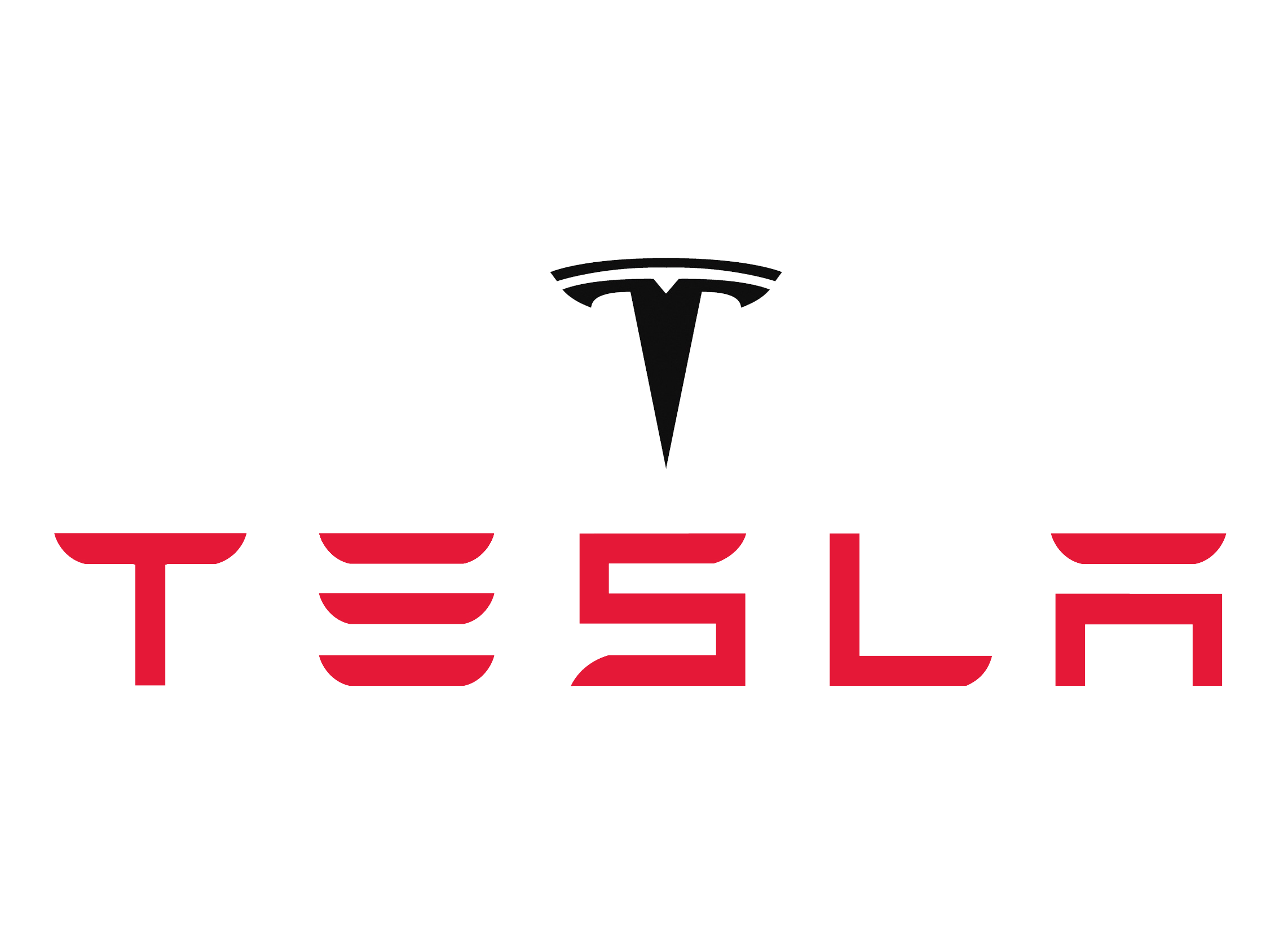
8. Tesla
While the electric vehicle market is still rather new, Tesla took a smart approach to pierce the market. Starting out in a very limited, specific area of the still young market – luxurious electric cars, and with a plan to expand into more affordable models later on – Tesla took their differentiation strategy to the next level.
Essentially, Tesla surpassed just creating electric vehicles and became the technological standard by supplying parts and infrastructure like charging stations. After generating revenue from the high-end market, they plan to expand by investing in less expensive cars as the technology develops.
But for the time being, Tesla knows how to cater to their target audience quite well, and the narrow consumer group of wealthy, environmentally-conscious people with interest in hi-tech quickly became loyal fans of the ideology behind Tesla motors.
Brands Need Visual Consistency
Too often, visual identity and branding are confused with one another. Although creating consistent, thoroughly thought-out and rigorously-followed visual standards is definitely a large part of branding, it’s not everything. But regardless, the visual aspect of your branding is important, and it needs to be cohesive across all platforms.
Consistently presented brands can receive 4 times more visibility in the marketplace.
To achieve this, invest in a brand book, or a set of defining visual features of your brand. Whenever you’re developing a product, communication and marketing campaign, you should refer to your brand book to ensure consistency in branding.
Creating a brand book will help you avoid any deviations from style, quality and character throughout all channels. Brand books should include your logo, but it typically also will discuss your color palette, font family, business card and letterhead design, website layout, copywriting tone, and even photography, illustration style and other graphic elements you might want to use.
A logo -- the hallmark of your brand and brand book -- is the landmark of your company. When your prospective customers see your logo, the company name and products must be recognizable and memorable. More importantly, it needs to communicate the core brand values and be in tune with the ideologies of your company.
Logos are normally unchanging and constant, adding additional consistency. Using multiple logos is generally frowned upon because it can create an image of an unreliable brand that can’t maintain a decision.
However, subtle variations within one logo design can show flexibility and better communication from brand to the consumer. In fact, some logos are designed to always appear in different color schemes, like FedEx’s color variance, which is dependent on the type of delivery service. This example is a smart execution of a practical goal.
When done skillfully and with a strong, concrete purpose in mind, temporary logo variations can further cement a brand identity.
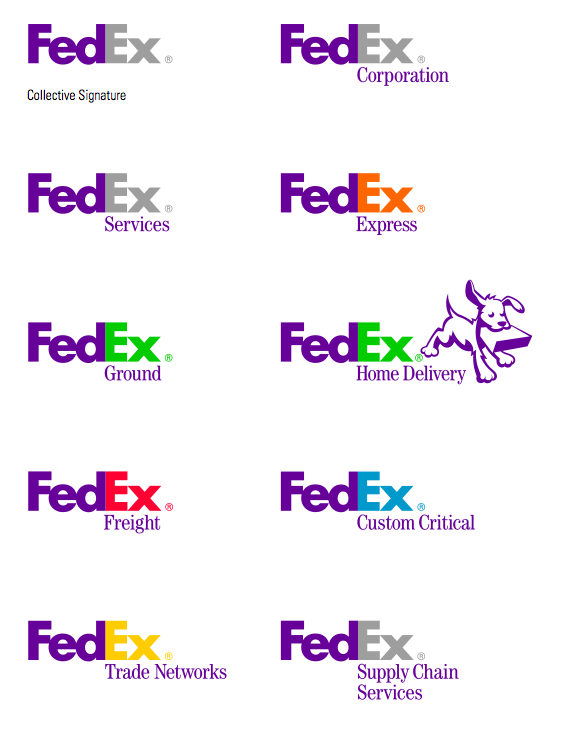
9. FedEx
The iconic delivery company logo has a few secrets in plain sight, such as a right-pointing arrow hiding between the letters E and X. But this symbol was also designed with extensive color variance in mind. Today, FedEx applies different color schemes to their different sub-brands – red for freight systems, green for ground delivery, blue for office and the original yellow for their express service.
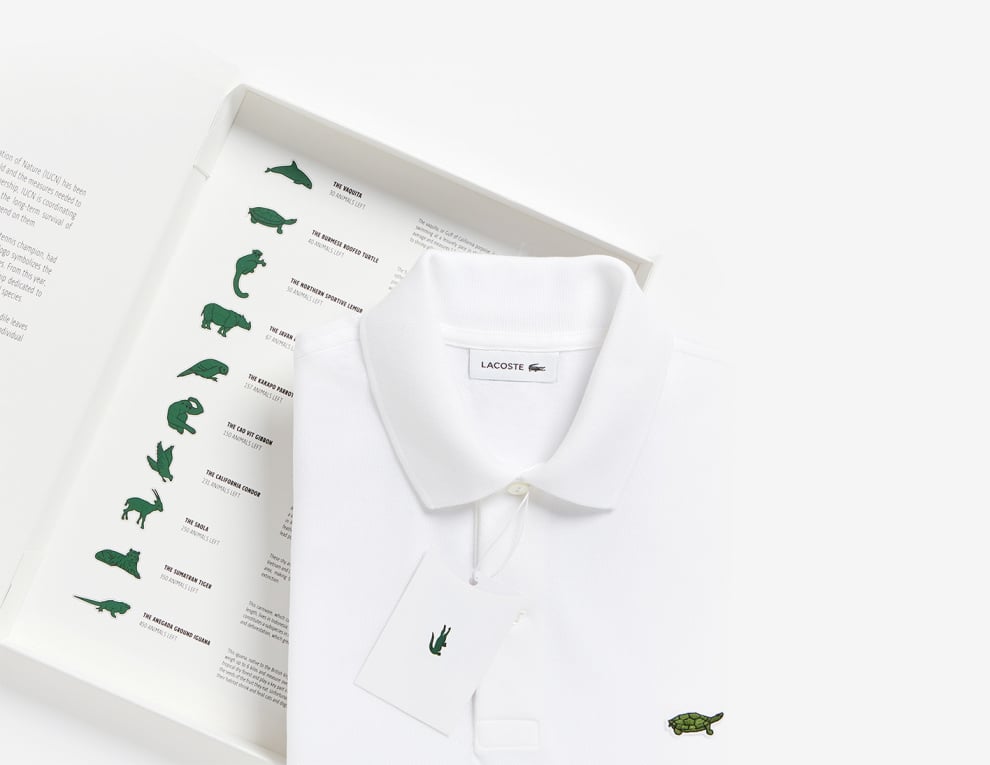
10. Lacoste
French clothing company Lacoste is an iconic brand with a long tradition and world-famous crocodile logo dating back to 1936. That open-mouthed crocodile embroidered on recognizable Lacoste shirts has remained completely unchanged from the beginning. However, Lacoste introduced a new logo for a limited-time campaign.
Lacoste partnered with International Union for Conservation of Nature (IUCN), launching a temporary campaign named “Save Our Species” during Paris Fashion Week in March 2018. The essence of the campaign is classic Lacoste shirts with a twist – instead of embroidering the classic crocodile logo, the shirts have a symbol of one of 10 endangered species. However, Lacoste maintained their brand identity by designing each animal in the same hue and style as their typical symbol.
Out of the total of 1,775 shirts, the Burmese roofed turtle has the smallest number of 30 shirts, and the Anegada iguana appears most frequently on 450 shirts. But those numbers are not arbitrary. The animal species, all facing extinction, appear on shirts in proportion to the numbers of remaining specimens. The campaign demonstrated that intentional visual inconsistencies can prove extremely powerful when executed well.
Branding Is Essential For Businesses
All in all, branding is an extensive topic impossible to cover in a single take. However, there are universal principles that can be applied to any situation. Whether your goal is to create a recognizable product or a company known for its reliability, your story, unique features and visual identity are an essential part of creating a successful brand.
Ready to create a strong brand of your own? DesignRush has a list of top branding agencies that can develop a strong personality your consumers will gravitate towards. Pick the best branding agency today!









